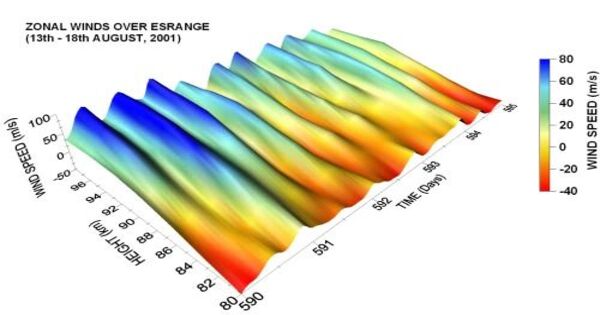An atmospheric waveguide is an atmospheric flow structure that enhances the propagation of specific atmospheric waves. It is an area of the Earth’s atmosphere in which some types of electromagnetic radiation, particularly radio waves, can travel great distances with little attenuation or loss. These waveguides are generated as a result of the atmosphere’s unique features, such as temperature, pressure, and composition, which influence electromagnetic wave behavior.
The tropospheric duct is one of the most well-known atmospheric waveguides, formed when a stable layer of warm air is caught between two layers of cooler air. This temperature inversion effectively traps radio waves within the duct, allowing them to travel far further than they would under normal atmospheric conditions. Tropospheric ducting is frequently observed during specific weather circumstances, such as temperature inversions or severe temperature gradients in the atmosphere.
The effect occurs because mean flow direction and strength affect wave characteristics such as group velocity and vertical wavenumber. Thus, for example, westerlies may be an excellent waveguide for eastward-traveling waves while substantially dissipating westward-traveling waves by increasing or decreasing their vertical wavenumber. Modifying the waves’ group velocity alters their meridional propagation speed, directing them more poleward or equatorward.
Atmospheric waveguides are of special relevance in telecommunications because they can be used to improve the range and efficacy of radio communication systems such as radio broadcasting, radar, and wireless networks. Understanding the features and behavior of atmospheric waveguides allows engineers and researchers to optimize the design and operation of communication systems to capitalize on these natural occurrences.
















